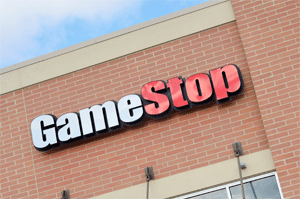 By changing its mobile focus from conversions to engagement and influence, coupled with an enhanced mobile app experience and analysis of customer data from its PowerUp rewards program, GameStop has seen tremendous success in mobile-to-store sales.
By changing its mobile focus from conversions to engagement and influence, coupled with an enhanced mobile app experience and analysis of customer data from its PowerUp rewards program, GameStop has seen tremendous success in mobile-to-store sales.
From January 2014 – six months prior to the launch of the updated app – to January 2015, GameStop saw a 415% growth in direct revenue from the mobile channel, a 460% increase in mobile-influenced in-store reservations, and a 5x increase in in-store pickup requests.
Jason Allen, vice president of multichannel for GameStop, said the company realized it didn’t make sense to focus on mobile commerce when less than 5% of customers were making purchases there.
“One of the first insights we got from PowerUp data when it launched in 2010 was that customers were doing the opposite of traditional showrooming, using our online properties to research, get product information and find a store, preferring to engage with associates” Allen said. “So we took a different perspective: Forget direct sales online, how can we enhance our services and experiences in mobile to help customers find an easier path to purchase, and it doesn’t have to be on a device?”
Tapping its vast store of PowerUp data – gleaned from 40 million members worldwide, representing 71% of revenue – GameStop then set out to revise its mobile app in 2014 by giving the people what they want.
“We found that customers really wanted four things: Easy-to-find products, the ability to look up the value of their old games, simple tracking of pre-orders and reservations, and using their devices to order and pick up in store,” Allen said. “So we saw an opportunity not to fit our website into the mobile app, but give customers the experience they want. As a result we’ve seen a 138% increase in traffic growth and a 68% gain in active users to the app, which represents nearly 20% of our multichannel traffic, up from 9.5%.”
The updated app included a new feature, Trade Center, giving customers access to the trade-in value of all games in GameStop’s system. “Before we had a landing page with the trade-in value of the top 150 games,” Allen said. “Now they can look up any game. Within the first week after the new app launched in July 2014, Trade Center became one of top three destinations on mobile that led to in-store purchases.”
If GameStop had the PowerUp data insights sooner, “we never would have taken an ok online shopping cart and made it better,” he said. “We would have put the effort where the customers are – search, product pages and trade values. Now with this data, we can see how our initiatives, projects and experiences can impact all channels.”
